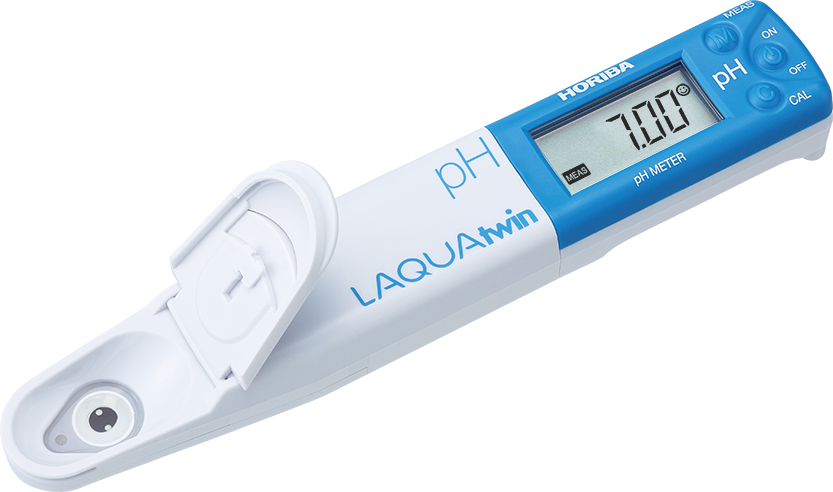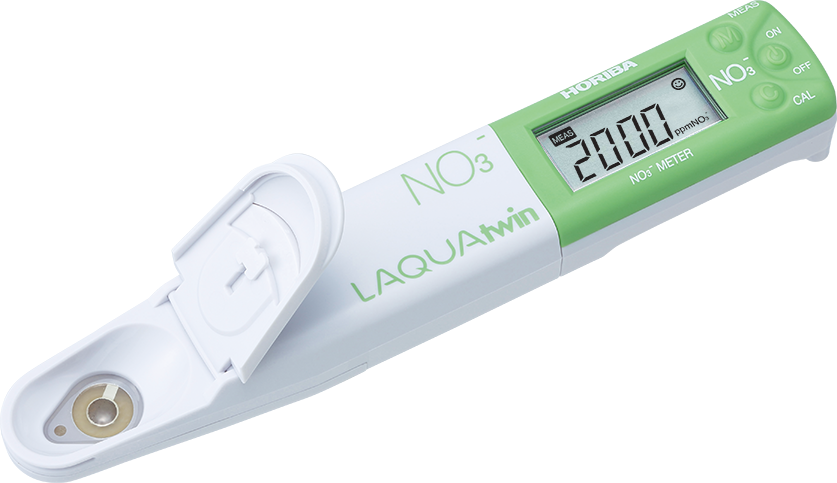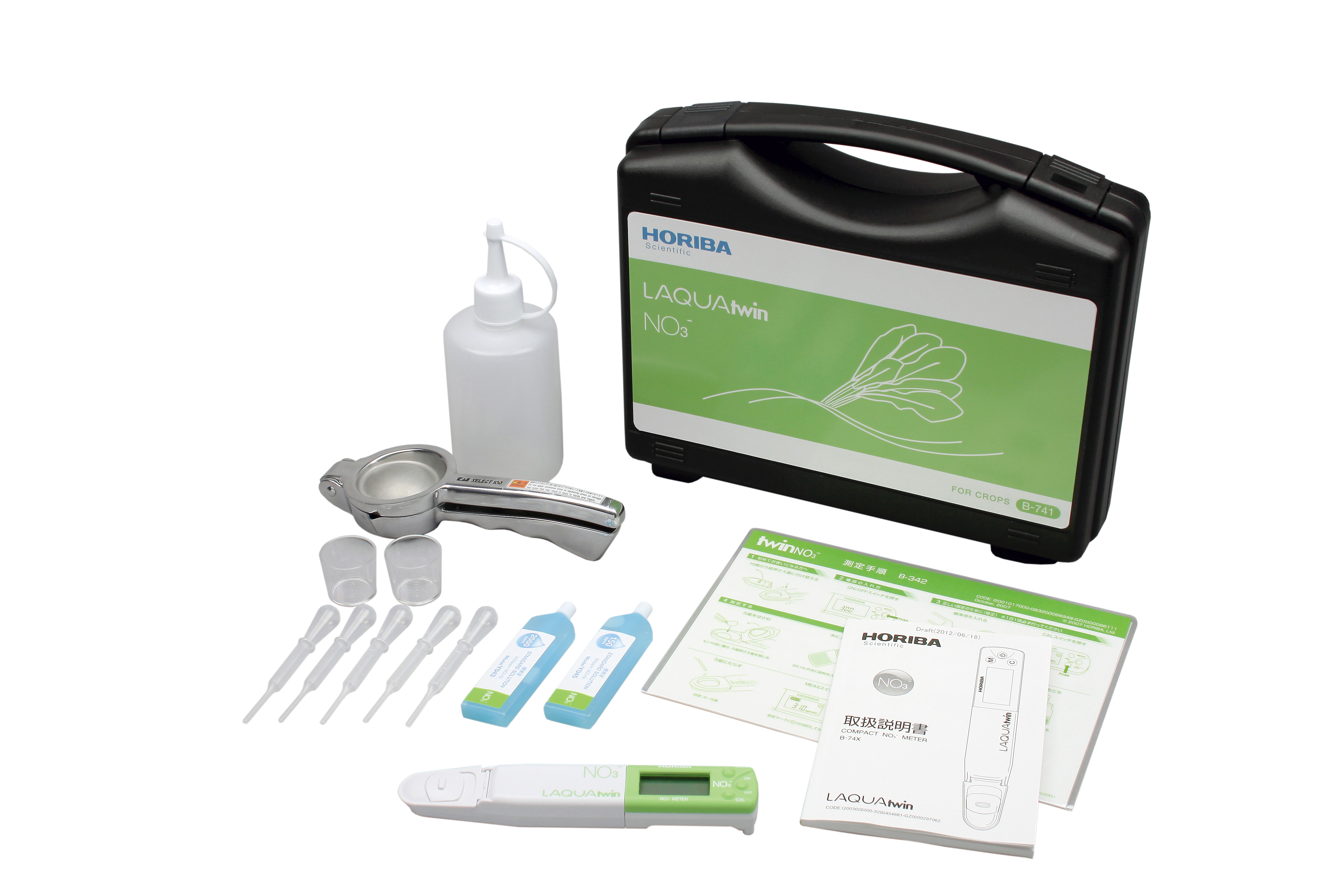Increased yields through early investigation of soil conditions before the next sowing
HORIBA LAQUA series for fast and uncomplicated measurement of important leading parameters in the field of agricultural economics
Soil preparation lays the foundation for a successful harvest in the following year. Because of the changing climatic conditions, soil analysis as well as soil cultivation are becoming increasingly important.
What does an optimal soil condition for a successful harvest look like?
An optimal soil should be
- loose
- compaction-free
- crumbly
- reconsolidated
If a soil does not have the above-mentioned properties, soil compaction can occur. The consequences of compaction can be described as follows:
- Siltation and erosion
- Lack of oxygen in the soil
- Reduction in the activity of microorganisms
- Disruption of mineralisation
- Restriction of root growth
- Disruption of capillary rise of soil water
This in turn leads to a nutrient deficiency, scanty growth and leaf discolouration as well as significantly lower yields.
If the fertility of the soil is to be adjusted to an optimum, the condition of the soil should be checked in advance. A suitable method for this is, among other things, the examination of the soil surface, the soil structure as well as the soil life, the colour and the smell. Soil tests can provide information on the pH value, base saturation and nutrient supply.
The fertility potential of a soil can be assessed using the five pillars of soil fertility. They allow conclusions to be drawn about whether soil functions are running optimally or whether measures can be taken to improve soil fertility.
Soil properties are mainly influenced by natural site conditions such as climate and parent rock, but they can also be changed by agricultural use. They are closely interrelated: if one parameter changes, this can have an impact on other properties.
The five pillars of soil fertility can be described as follows:
- Humus content
- Cation exchange capacity (CEC)
- pH value and calcium supply
- The pore structure: Air and water balance
- Rootability
Soil testing has been effectively used over the years to determine the availability of nutrients to plants and thus soil fertility.
Of the above five pillars of soil fertility, calcium is an elementary component of stable soil fermentation. It acts as a link between clay minerals and soil organic matter, contributing to the formation of stable clay-humus complexes that give soils elasticity.
To find out whether the soil is optimally supplied with calcium, one can refer to the pH value as a first step. Each soil type requires specific pH values and lime contents in order to be optimally supplied for the formation of a stable soil ferment. If there is an imbalance between the alkaline cations, this can have a negative effect on the soil structure: Too much magnesium, for example, has a hardening effect, and too much potassium has a silting effect. The ratio of the elements to each other is therefore decisive depending on the soil type. For example, sandy soils tend to require a closer magnesium-calcium ratio than clay soils.
The optimum soil pH for healthy growth varies depending on the plant. In general, however, most plants tolerate a soil pH of 6.0-7.5, as the majority of nutrients are available for uptake in this pH range.
Soil pH is thus a measure of the acidity or alkalinity of the soil. On the pH scale, solutions with a pH of 7 are called "neutral solutions", less than 7 "acidic solutions" and greater than 7 "basic or alkaline solutions".
In strongly acidic soils, aluminium and manganese can become highly available and toxic to the plant, while the occurrence of calcium, phosphorus and magnesium becomes lower. Also in strongly alkaline soils, the concentration of phosphorus and most other micronutrients, for example, are reduced.
Accordingly, depending on how the soil is planted, it makes sense to know the plant's preferred pH value and to test the soil for it.
The soil pH can be determined using the HORIBA LAQUAtwin pH pockettester by mixing a soil sample with water and placing the resulting aqueous solution on the sensor and measuring it within a few seconds.
The pH determination provides information on whether the soil is suitable for the plant to be grown or may need to be adjusted for optimal plant growth.
Thus, the pH measurement is an important indicator of nutrient availability in the soil.
The following hand testers from the HORIBA product range are available for pH value analysis:
Pocket testers of the HORIBA product range
Besides the pH-value analysis, the measurement of nitrate is an elementary component in the examination and evaluation of soil conditions.
Nitrogen is one of the essential nutrients taken up by plants in the form of ammonium and nitrate ions for their green leaf growth. The application of ammonium fertiliser to plants results in a conversion to nitrate. In addition, organic material that is decomposed in the soil is also converted first to ammonium and then to nitrate. These circumstances lead to an increased nitrate content in the soil.
Plant tissue, especially from the leaf and stem, contains a relatively high nitrate content, which has proven to be a good indicator of the plant's nitrogen content. Laboratory analysis of the nitrogen content in dry plant tissue normally takes a lot of time. Thanks to the modern technology of HORIBA's compact nitrate meter, chemical analyses succeed in a very short time and can be carried out independently.
The nitrate content in the soil can be determined with the HORIBA LAQUAtwin Nitrate Handheld Tester by mixing a soil sample with water and placing the resulting aqueous solution on the sensor. You will receive your measurement result within a few seconds.
HORIBA LAQUAtwin Nitrate Hand Tester
The HORIBA handheld nitrate tester is also available in a high-quality case solution, where it is pre-set at the factory to the relevant calibration points 300PPM and 5000PPM, for the analysis of plant sap.
HORIBA LAQUAtwin Nitrate Hand Tester Case Solution
On request, you can also put together your own case solution with the hand testers relevant to you.
HORIBA thus offers you a wide product portfolio of pocket testers - your on-site laboratory for fast and uncomplicated soil analyses.














